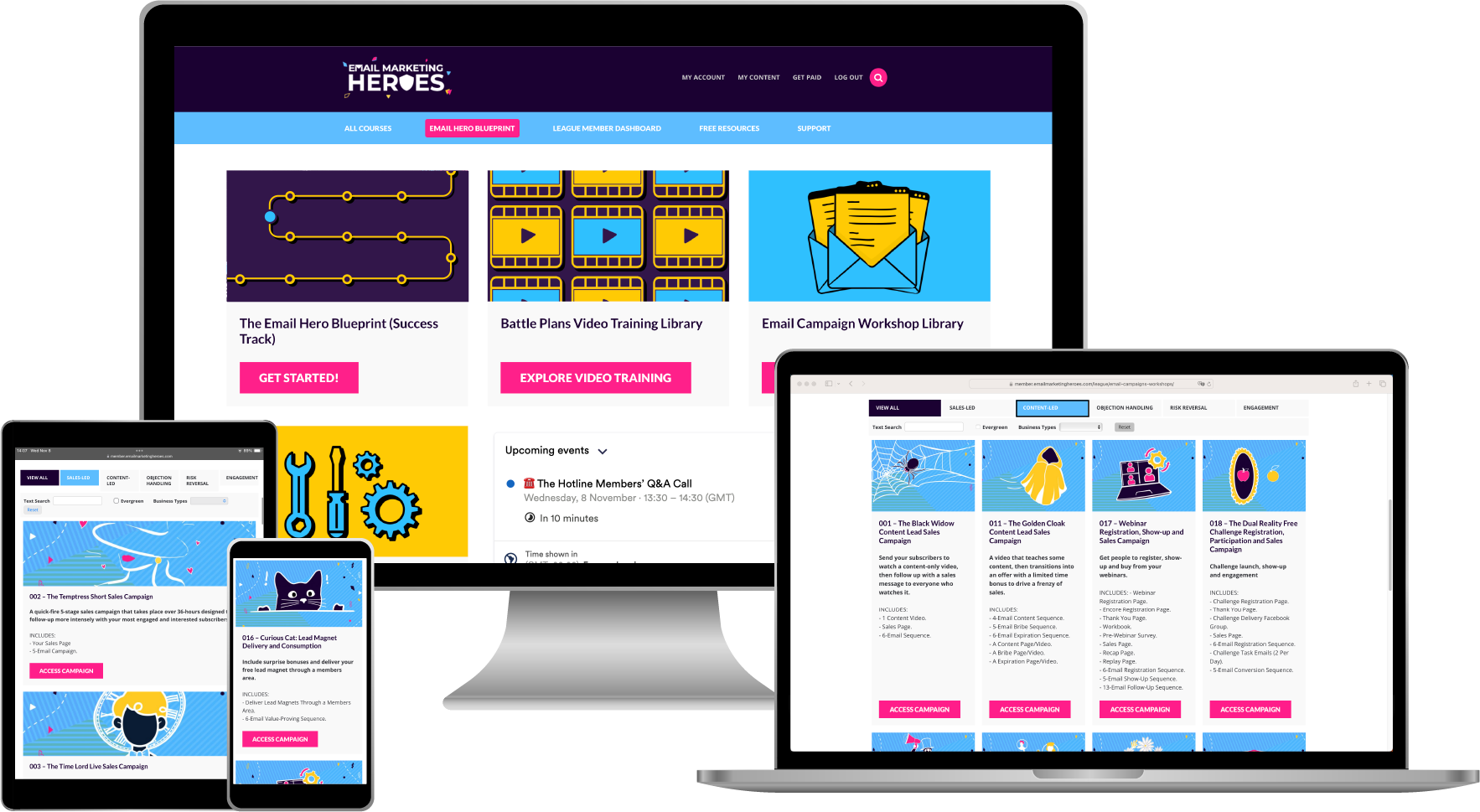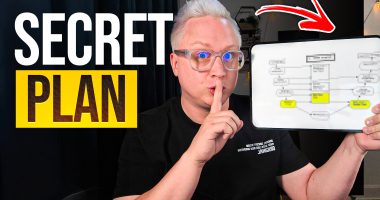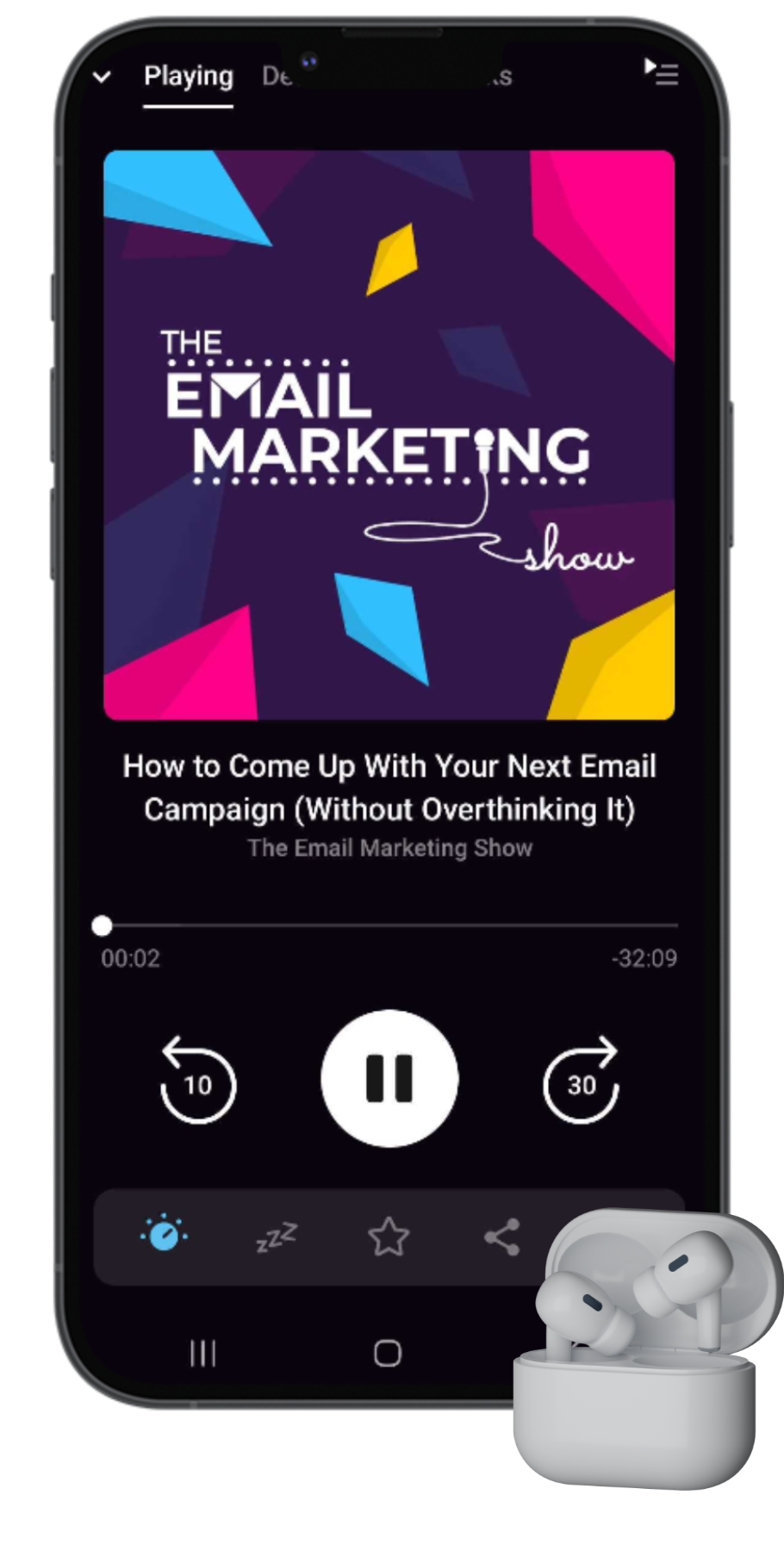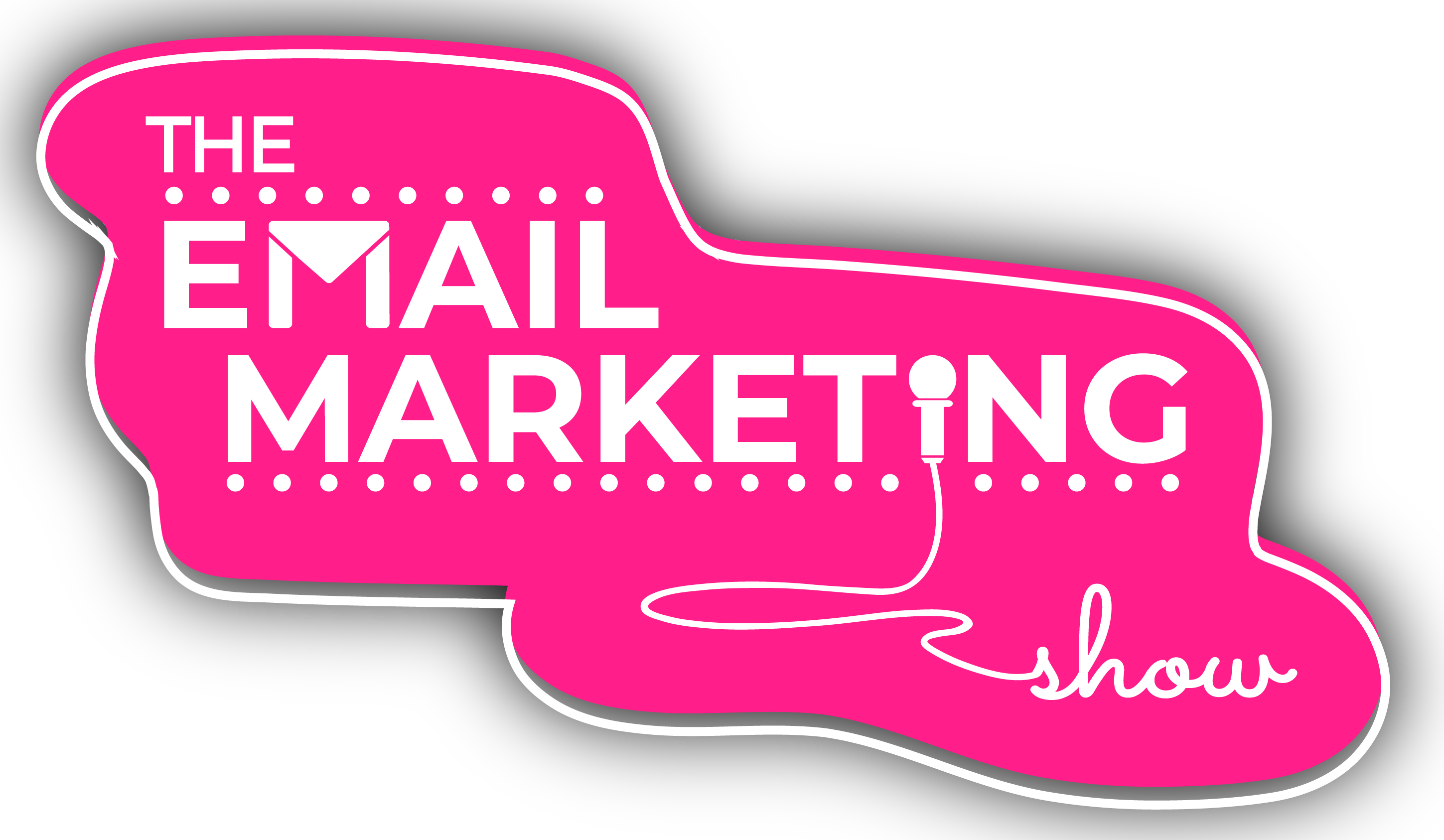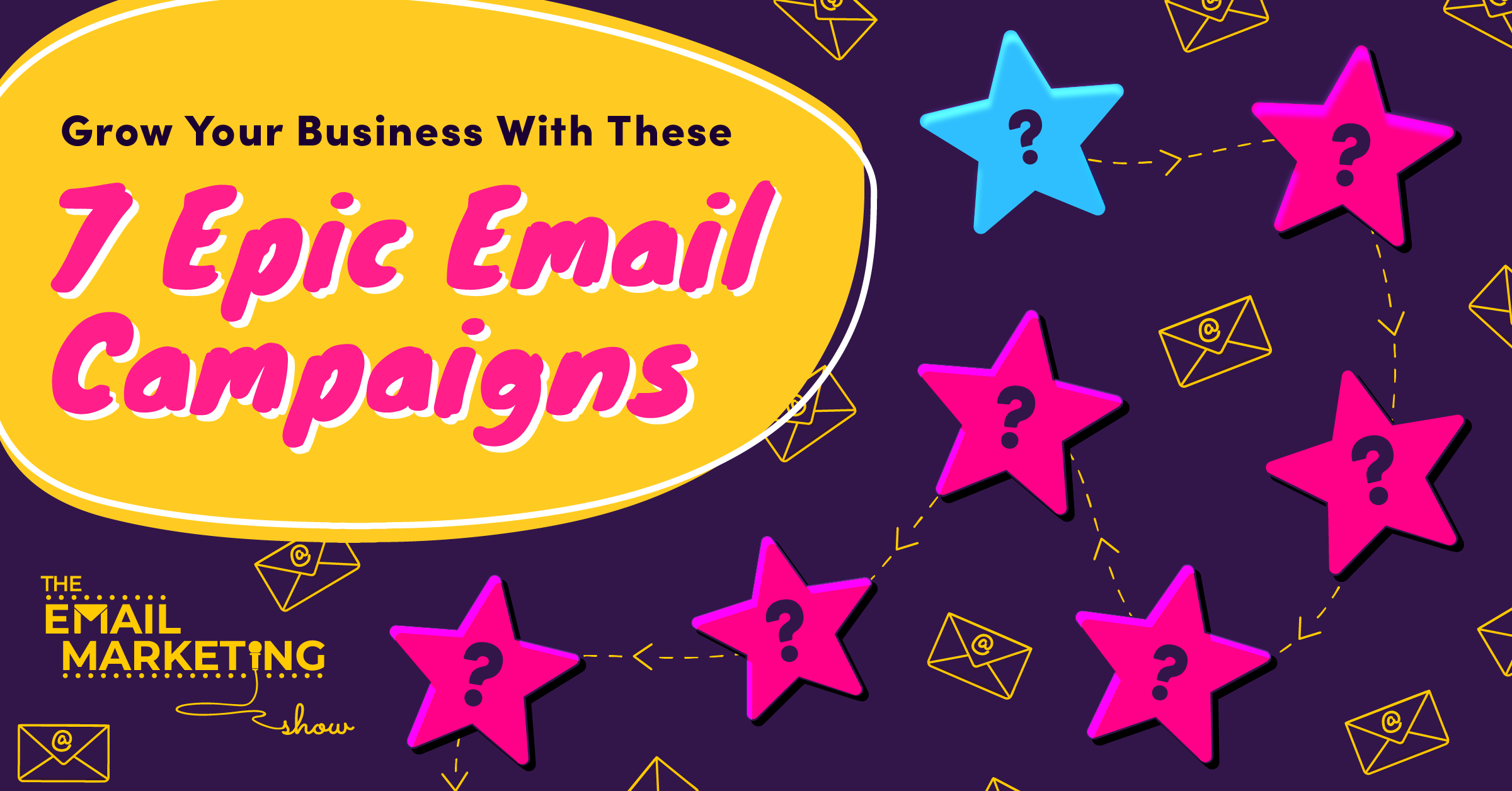
The 7 Proven And Essential Email Campaigns To Add To Your Marketing Strategy And Elevate Your Business
How many email marketing sequences do we need for our business? What are the critical email campaign examples you should have in place?
We're Kennedy and Carrie, and here are the 7 email campaigns we think every business should have.
Ready to take notes? (And, most importantly, take action?)
SOME EPISODE HIGHLIGHTS: (0:38) Want to carry on with the conversation? Join our FREE Facebook group. (3:04) Take action - build one campaign at a time. (5:07) Why are campaigns with multiple emails more effective? (12:40) 1. A delivery sequence. (15:40) 2. A welcome sequence. (19:23) 3. A direct sales sequence. (22:37) 4. A content-led sequence. (27:57) 5. An objection handling sequence. (33:19) 6. A risk reversal sequence. (34:20) 7. A subscriber engagement sequence. (39:01) Subject lines of the week.
Take action – build one campaign at a time
The email campaign examples we're giving you here are the ones we think you must have in your business, but don’t get overwhelmed by this advice. Build one campaign at a time and then improve them later because you cannot optimise what doesn’t exist!
We cannot predict perfection, so we should stop waiting for it – we can only polish our progress. So don't wait to start your email marketing until you have all the sequences fully written, optimised, and reviewed. You'd be delaying action and creating a noble obstacle. Just get something out there because, with email marketing, you’re building relationships with people. We need to stop acting like every email is a performance!
Why are campaigns with multiple emails more effective?
Some campaigns could have as few as one email, but you can add as many emails as you want to a sequence. Some of our campaigns are made up of up to 30 emails – it depends on what they are and what they do. A sequence of multiple emails will always outperform one single email. That's because none of us is getting a 100% open rate on our emails (not even Google!) Even if you’re getting a healthy 40% open rate, 60% of your subscribers are still not seeing those emails.
Also, we are all inspired by and connect with different things. If you tell someone that a particular offer is expiring soon, they might buy because they're motivated by loss. But the same email might not work for someone who's motivated by different things. Instead, you might be able to get their attention by offering a bonus, for example. Having a sequence of emails in a chain with time delays between them always outperforms a singular email.
Why you should pre-write and automate your email campaigns
We recommend you pre-write and automate your email sequences because, that way, they’ll perform for you no matter what's happening in your life or business. Having automated email sequences gives you flexibility. Your pre-written emails are an asset – not a liability!
If you spend time sending out broadcast emails, you can never use that email again, and you won’t get that time back. But if you write your emails into automated campaigns that every subscriber in your list will receive, you're building an asset that’s going to serve you time and time again. Automated campaigns are effective not only because they help you make sales, but also because they allow you to deepen the relationship with your subscribers (or help you re-engage them). It depends on the point of the campaign.
The key is to build your email campaigns as an asset that compounds and serves you for as long as you need it to – not just for the time it takes you to do the work. When you write and schedule emails, you have the systems and automations already in place. And they keep working for you even when you can't, for whatever reason. Write your emails when you feel your boldest and bravest self, and pre-programme that content to go out regardless. That way, your emails will do the heavy lifting for you. They can act as a staff member, i.e. a hugely powerful asset in your business that allows you to keep going when you can't.
So what are the 7 email sequences you should have in your business?
1. A delivery sequence
You need a simple, engaged sequence that delivers whatever people want to download from you. Even if you’re giving away that product for free (i.e. a lead magnet), treat it with reverence – don’t undervalue it because it’s free. People will decide on the value of something based on how you treat it. They might not be paying money for it, but they're giving you their email address. And data is currency. So show people that what they get in return is valuable to them.
Remember that you need a delivery sequence for every product (free or paid-for) that you give out. Send people what you said you'd send them, and keep hyping that. Don’t even refer to your lead magnet as a freebie, if you can avoid it. Because people paid for it with their data and attention. And once they download it, you want them to ask you what’s next.
If you're getting started, a delivery sequence is the easiest email campaign to put together. You don’t even have to write it all in advance either. A grandfather of this industry, Jimmy D. Brown, used to say that every Tuesday and Thursday he'd set his alarm and spend 30 minutes adding one email to every one of his sequences. Before long, he had hundreds of emails. So start with one because you can’t improve on what you don’t have.
2 . A welcome sequence
The delivery and the welcome sequence aren’t the same thing. You may have several ways for people to get into your world (i.e. different lead magnets, challenges, webinars, etc.) You want different delivery sequences for each lead magnet, but you only need one welcome sequence.
Our Welcome Sequence (the one we teach inside The Email Hero Blueprint) is called the Getting To Know You sequence. No matter how someone comes into our world, they go through the same welcome sequence. It’s highly optimised, everyone gets it, and you don’t have to create a new one every time you launch a new lead magnet.
The first email of your welcome sequence should bridge the gap between how people got on your email list and what’s going to happen next. This is an important step because for most people the transaction is completed once they've downloaded your lead magnet. They ‘paid’ through their email address, and any emails they get from you after that are a nuisance and a surprise! So in the first email of your welcome sequence, tell them what's going to happen next. Use that email to position the ongoing emails and resell them on something valuable – this isn’t an apology!
Also, give them a whole bunch of ways they can connect with you on different platforms (such as your social media or your podcast). While your delivery sequence is transactional, your welcome sequence leads people into the relational territory.
3. A direct sales sequence
The direct sales sequence is conversional, in that you're starting the process of converting subscribers into becoming paying customers. This is where you tell people what you sell and how you serve.
This campaign helps you address the people who come into your world with an urgent need for a solution to their problem. Your job is to help them, so don’t push this stage down the line. The last thing you want to do for these people is to disengage them by pushing some irrelevant content down their throats.
Even if people need more information before buying, you still want to introduce them to your core offer. So be clear on what you sell, on the solution you have, and the problem it solves. You'll find that rabid (urgent) buyers will buy at this stage – this campaign is for them.

The Top 10 Books To 'Power Up' Your Email Marketing
10 book recommendations that will improve all areas of your email marketing (including some underground treasures that we stumbled upon which have been game-changing for us).
4. A content-led sales sequence
Your content-led sales sequence is for the people who need more information. They’re more cautious buyers – perhaps because they've been burnt before. This isn’t a content value-based sequence by the way – we’re not just entertainment in someone’s inbox! It’s a content-led sales email campaign. Ultimately, your goal is to offer people your solution (just like in the direct sales campaign), but now you're doing it through a content sequence. It’s not content for content’s sake – it’s content that needs to set up the sale.
Why? Because we want to make sales, of course, but also because we don't want to distract our audience and add more overwhelm to their lives. People are coming to you with a specific problem they believe you can solve. So don’t start talking about irrelevant topics! If they wanted more content or overwhelm, they'd still be browsing the Internet. They want clarity. So your job is to prove that what you have is unique and interesting and is going to help them. You're going to do that by teaching them something small but tangible that gives them a quick win and makes them more willing to join your programme. You could share a video to teach them something, for example. Whatever you share, start with content, and then move into making an offer. This is what a content-led sales sequence is.
Don't make people feel like they're being beaten over the head with the message to buy. If that's all you say, why would they want to stick around and pay attention to your emails? Give them value. Even if they don't buy from you now, they’ll still be in a better position than where they were before. They have more understanding and some ideas they can go and implement.
But if they do buy at this stage, they're a more educated and qualified buyer. Overall, this campaign helps you reduce return rates, refund rates, complaints, and customer service instances. Because your content helps them understand if you’re right for them.
The best thing yet? You don't have to create new content specifically for this campaign. Just grab something you already have and repurpose it to use it inside your content-led sequence.
5. An objection-handling sequence
Your objection-handling campaign is for people who, for whatever reason, haven't bought yet because they have an objection of some kind. They may be wondering if your solution works for them or if they can afford it. So your objection handling campaign has two jobs:
- Find out what the objection is. A way of doing this is to run a survey and ask.
- Overcome the objection. You want to turn that objection into the reason why they should buy.
One of the biggest objections we get from people before they join our progamme is that they’re not good writers. So we tell them that’s exactly why they should get all the frameworks for the email campaigns they need. Also, we have this notion that a ‘well-written' email is one that our high-school teacher would approve of. But those tend to be the worst-performing emails! They may be well-written, but they tend to come across as cold and inauthentic – like they weren't written by a human being. They feel disconnected from reality and don’t have emotions.
Instead, you want to write how you talk – with all the expected imperfections. Why? Because when people read your emails they do something called subvocalisation, which means they hear your voice in their head while reading. If you’re not a good writer, write exactly how you speak. And if it means you’re going to dictate your emails first and then tidy them up later, that’s what you'll do.
Remember – take people's objections and turn them into the reasons why they must. It’s a simple mindset shift and a different way of motivating people.
6. A risk reversal sequence
The next email sequence you need to have in place is a risk-reversal campaign. Lots of people get scammed or burnt by solutions that don't end up being what was promised. You want to give your audience the guarantee that what you're selling is great and will work for them. So your risk-reversal campaign has the job of reversing, removing, or reducing the risk that your programme might not work.
You do this by offering your product at a low cost or by giving a free trial, for example. Or maybe you could invite people to attend a coaching session or participate in a group call. You’re showing people that the perceived risk doesn’t exist.
7. A subscriber engagement sequence
The last email sequence you want to have in place is a subscriber engagement sequence or re-engagement sequence. This is important because you can't help the people who are disengaging from your emails! By not opening or interacting with your emails, they're also damaging your sender's reputation, which is your ability to get your emails delivered to all the people who want to receive them.
So look for people who are disengaging with your emails, put them through a re-engagement sequence, and try and bring them back from the brink. If they don't, let them go. Unsubscribe them and keep your email list clean.
It may seem scary but think about this example. If you were speaking at an arena to an audience of 20,000 people, but 18,000 of them were talking amongst themselves or going in and out of the venue, would this be good for you? What would happen to the 2,000 people who are present and engaged? You wouldn't be able to fully focus on them!
A disengaged audience isn't good for your business or for the people who want to pay attention and buy from you! You can only serve the people who choose to be there. So release the ones who don't want to be there and focus on the room. Those other people can always come back later – you're not closing the doors for good. But right now you’re not serving them, so let them go.
Join The Email Hero Blueprint
If you’d like to get your hands on the exact frameworks for these 7 email campaigns (plus many more email sequences that will get you results), go check out The Email Hero Blueprint. You can use tried and tested frameworks and launch them much faster than you would if you had to create them from a blank page.
Subject line of the week
This week’s subject line is “Slides for today’s masterclass”. This one came about as Kennedy was teaching a webinar and wanted to evoke people’s curiosity and remind those who hadn't registered yet to go and do so. The subject line works because it's intriguing and engaging – it gives a little peak behind the scenes. It's a fresh angle you can use to remind people you’re running a masterclass or a webinar. So check it out!
Useful Episode Resources
Related episodes
Template For Email Marketing Campaigns.
How To Run A Smashing Flash Sale With One of The Best Email Marketing Campaigns In The World.
Perfect Timing? What’s The BEST Time To Send An Email For Maximum Impact?
FREE list to improve your email marketing
If you want to write better emails, come up with better content, and move your readers to click and buy, here's how. Here's a list of our Top 10 most highly recommended books that will improve all areas of your email marketing (including some underground treasures that we happened upon, which have been game-changing for us). Grab your FREE list here.
Join the FREE Facebook group
Do you want to chat about how you can maximise the value of your email list and make more money from every subscriber? There's a way! Every business is different, so come and hang out in our FREE Facebook group, the Email Marketing Show Community for Course Creators and Coaches. You'll find a lot of training and resources, and you can talk about what you're up to.
Try ResponseSuite for $1
This content is sponsored by ResponseSuite.com, the survey quiz and application form tool that we created specifically for small businesses like you to integrate with your marketing systems to segment your subscribers and make more sales. Try it out for 14 days for just $1.
Join The Email Hero Blueprint
Want more? Let's say you're a course creator, membership site owner, coach, author, or expert and want to learn about the ethical psychology-based email marketing that turns 60-80% more of your newsletter subscribers into customers (within 60 days). If that's you, then The Email Hero Blueprint is for you.
This is hands down the most predictable, plug-and-play way to double your earnings per email subscriber. It allows you to generate a consistent sales flow without launching another product, service, or offer. Best news yet? You won't have to rely on copywriting, slimy persuasion, NLP, or ‘better' subject lines.
Want to connect with Carrie?
You can find Carrie on her website!
Subscribe and review The Email Marketing Show podcast
Thanks so much for tuning into the podcast! If you enjoyed this episode (all about the 7 email campaign examples you must have in your business) and love the show, we'd appreciate you subscribing and leaving us a review of the show on your favourite podcast player.
Not only does it let us know you're out there listening, but your feedback helps us to keep creating the most useful episodes so more awesome people like you can discover the podcast.
And please do tell us! What do you really fill your working days with if you don't spend time on email marketing? We'd love to know!

